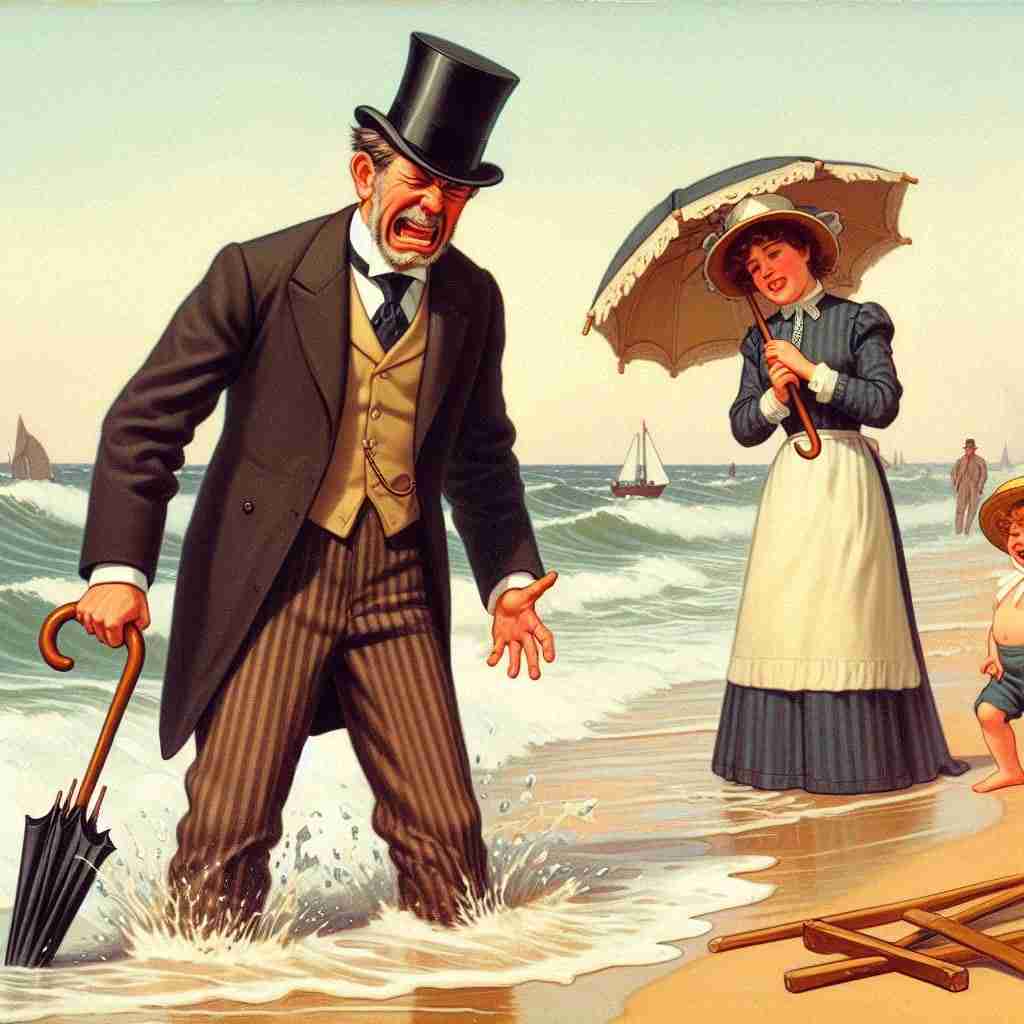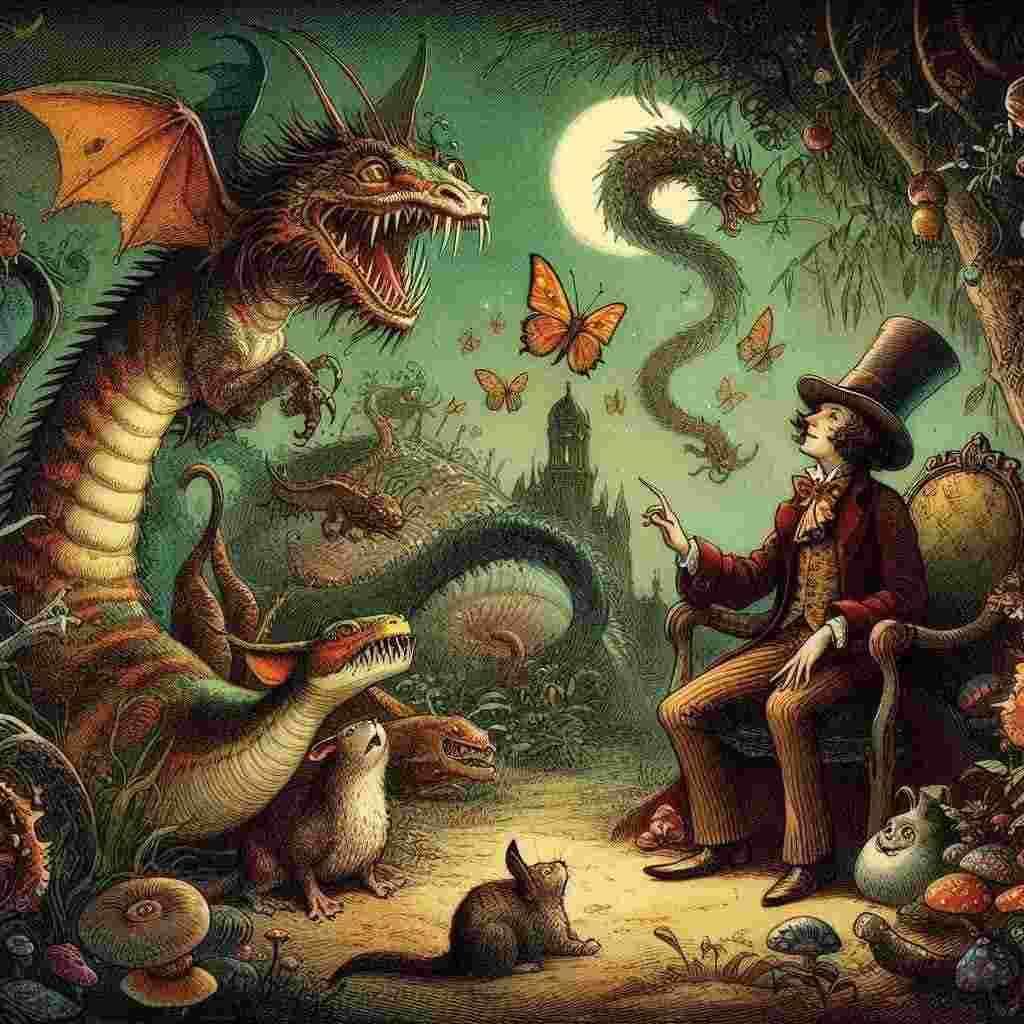2 Poems by Lewis Carroll
1832 - 1898
Lewis Carroll Biography
Lewis Carroll, born Charles Lutwidge Dodgson on January 27, 1832, in Daresbury, Cheshire, England, was a multifaceted individual whose legacy as a writer, mathematician, and photographer continues to captivate audiences well over a century after his death. Best known for his whimsical and imaginative children's literature, particularly "Alice's Adventures in Wonderland" and its sequel "Through the Looking-Glass," Carroll's work has become a cornerstone of Victorian literature and has profoundly influenced generations of writers, artists, and thinkers.
Dodgson was the third of eleven children born to Charles Dodgson, a parish priest, and Frances Jane Lutwidge. His early years were marked by a childhood stammer that would persist throughout his life, influencing his social interactions and perhaps contributing to his rich inner world that would later manifest in his fantastical writings. The young Dodgson showed an early aptitude for mathematics and wordplay, two interests that would remain central to his life's work.
He received his early education at home before attending Richmond School in Yorkshire and then Rugby School. In 1850, Dodgson matriculated at Christ Church, Oxford, where he would spend the majority of his adult life. He excelled in his studies, particularly in mathematics, and was awarded a first-class honors degree in 1854. The following year, he was appointed as a lecturer in mathematics at Christ Church, a position he would hold for the next twenty-six years.
It was during his time at Oxford that Dodgson began to develop his alter ego, Lewis Carroll. The pseudonym was a play on his real name, with Lewis being the anglicized form of Ludovicus (the Latin for Lutwidge) and Carroll being an Irish surname similar to the Latin name Carolus, from which the name Charles comes. This duality in his identity reflected the two sides of his personality and career: the serious mathematician and the whimsical storyteller.
Carroll's most famous works, the Alice books, were born from his friendship with the children of Henry Liddell, the dean of Christ Church. Alice Liddell, in particular, served as the inspiration for the character of Alice. The story that would become "Alice's Adventures in Wonderland" was first told during a boat trip on July 4, 1862. At Alice's request, Carroll wrote down the story, expanding it into the novel that was published in 1865. The book's success was immediate and profound, establishing Carroll as a major figure in children's literature.
The Alice books are notable for their clever wordplay, mathematical puzzles, and logical games, all of which reflect Carroll's diverse intellectual interests. They also showcase his ability to blend nonsense with razor-sharp logic, creating a world that is at once absurd and internally consistent. This combination has made the books enduringly popular with both children and adults, and they have been subject to countless interpretations and analyses by literary scholars.
Beyond his famous children's books, Carroll was a prolific writer in various genres. He published mathematical textbooks, political pamphlets, and poetry. His poem "The Hunting of the Snark" (1876) is considered by many to be his finest poetic achievement, a nonsense epic that continues to baffle and delight readers with its linguistic gymnastics and philosophical underpinnings.
Carroll's interest in photography, which he took up in 1856, was another significant aspect of his creative output. He became a renowned Victorian photographer, particularly noted for his portraits of children. His photographs were technically accomplished and artistically composed, reflecting the Pre-Raphaelite aesthetic popular at the time. However, his photographic work, especially his images of young girls, has been a source of controversy and speculation about his personal life and relationships.
Throughout his life, Carroll maintained a complex and somewhat mysterious persona. He never married and seemed most comfortable in the company of children, particularly young girls. This aspect of his personality has been the subject of much scholarly debate and speculation, with some seeing it as indicative of a childlike innocence, while others have posited more problematic interpretations. Regardless, it is clear that Carroll's interactions with children were a significant source of inspiration for his literary works.
In his later years, Carroll continued to write and publish, though none of his later works achieved the same level of success as the Alice books. He also devoted considerable time to logic puzzles and games, inventing several that are still in use today. His mathematical work, while overshadowed by his literary fame, was significant in its own right, particularly in the fields of linear algebra and voting theory.
Lewis Carroll died on January 14, 1898, just shy of his 66th birthday. His legacy, however, has only grown in the years since his death. The Alice books have been translated into countless languages, adapted into numerous films, plays, and other media, and continue to influence literature and popular culture. Carroll's wordplay, his ability to blend the logical with the absurd, and his unique perspective on childhood and imagination have ensured his place as one of the most beloved and studied authors of the Victorian era.
In the realm of literary studies, Carroll's work has been subjected to a wide array of interpretations, from psychoanalytic readings that explore the subconscious elements in his writing to linguistic analyses that delve into his masterful manipulation of language. His ability to create memorable characters and situations that resonate on multiple levels has made his work a rich field for academic study.
Lewis Carroll's life and work continue to fascinate scholars and readers alike. His contributions to literature, mathematics, and photography, combined with the enigmatic nature of his personality, ensure that he remains a subject of enduring interest and debate. As we continue to explore the wonderlands he created, we find that, like Alice, we are constantly discovering new depths and dimensions in the world of Lewis Carroll.
This text was generated by AI and is for reference only. Learn more
Username Information
No username is open
Unique usernames are free to use, but donations are always appreciated.
Quick Links
© 2024-2025 R.I.Chalmers (V2Melody).

All music on this site by R.I.Chalmers (V2Melody) is licensed under a Creative Commons Attribution-NonCommercial 4.0 International License.
Attribution Requirement:
When using this music, you must give appropriate credit by including the following statement (or equivalent) wherever the music is used or credited:
“Music by R.I.Chalmers (V2Melody) – https://v2melody.com”
Support My Work:
If you enjoy this music and would like to support future creations, donations are always welcome but never required.
Donate


